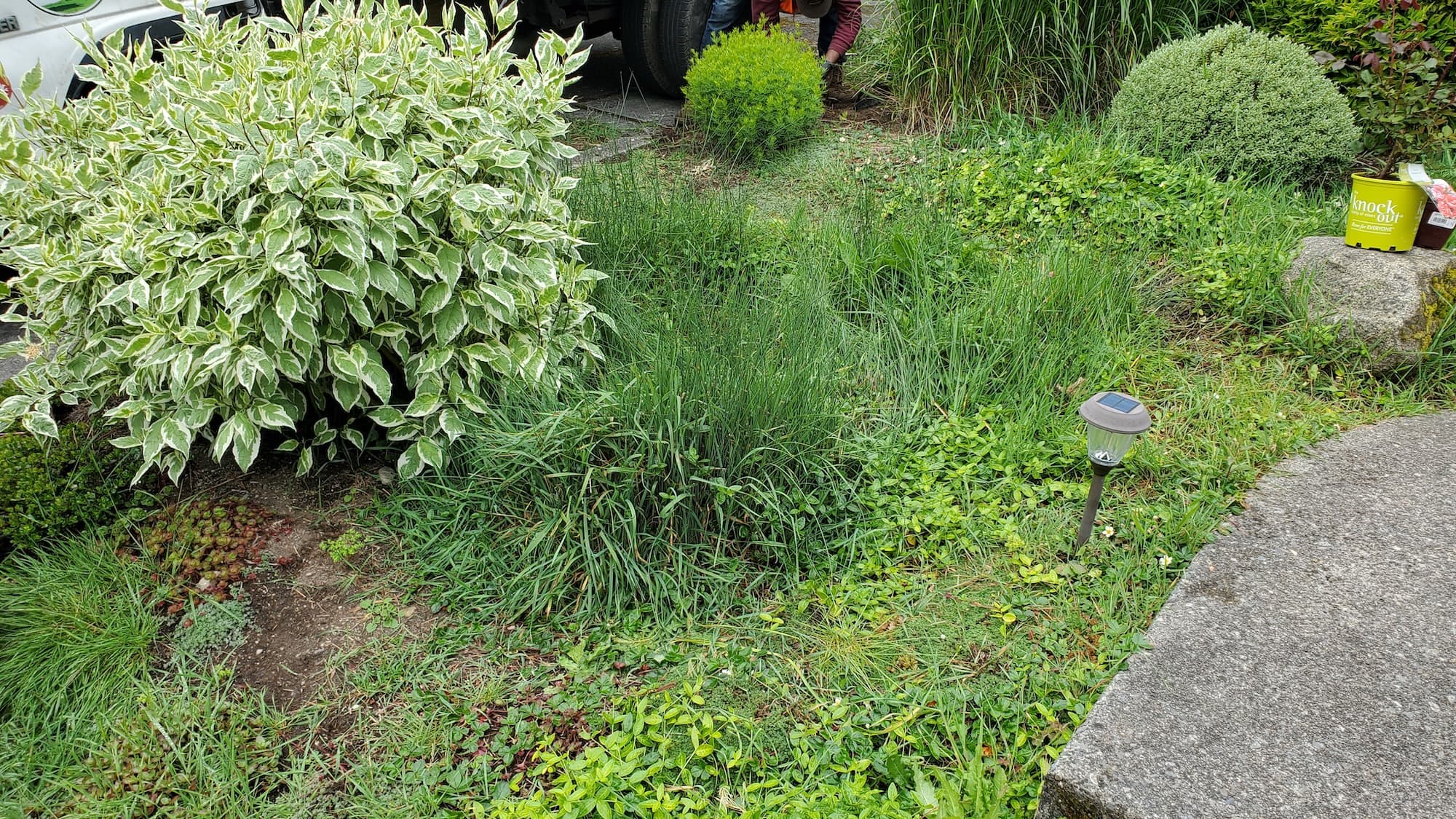Burien Replanting after invasive removal
Homeowner’s Issue
Burien yards face a unique mix of coastal weather, heavy winter rains, and pockets of compacted, clay-rich soil that make invasive plants thrive. Gentle slopes and ravines in parts of town trap moisture, encourage ivy and non-native blackberries to spread, and create erosion risks where roots are shallow. Many homeowners and landlords want low-maintenance yards that still look presentable for renters, resale, or everyday enjoyment.
We focus on replanting strategies that match shade and sun patterns under evergreen canopies, stabilize slopes, and work with local soil conditions instead of against them. Sustainable practices—manual removal, mulching, and planting natives—help stop regrowth without herbicides. Typical goals are safer walkways, reduced weed pressure, and plantings that need less watering. Local spots like Seahurst Park and Lake Burien show what native plantings can do for erosion control and habitat; we use those examples to recommend resilient choices for your property.
Our Quality Service
We replant with local conditions in mind, using soil amendments, erosion control on slopes, and drought-tolerant natives suited to rain-heavy winters. All work follows sustainable practices only—no herbicides—favoring manual control, organic mulches, and native plugs.
Benefits:
- Improved safety on slopes and paths.
- Better curb appeal with long-lasting, low-maintenance plants.
- Reduced future maintenance and lower irrigation needs.
What’s Included
- Site assessment: soil, sun/shade, drainage.
- Removal of remaining invasive roots and debris (manual/mechanical where needed).
- Soil preparation and organic amendments.
- Plant selection and installation of native or non-invasive species.
- Mulching and basic erosion control.
- Simple care instructions after installation.
Optional upgrades:
- Mulch + fabric (for high-weed beds).
- Organic weed control and manual follow-up.
- Haul-away vs. green bin disposal for plant debris.
Before & After / Expectations
Expect immediate visual improvement after planting, with full establishment over 1–2 growing seasons. Newly planted areas will need weekly watering for the first month, then tapering to deep, infrequent waterings.
Care tips for Burien yards:
- Water deeply once a week during dry stretches; less in fall/winter.
- Watch for moss and persistent ivy — pull by roots early in spring.
- Reapply 2–3” of mulch annually to suppress weeds and retain moisture.
- On slopes, add staggered plantings to form living erosion control.
FAQs
How long does a typical job take?
Most small to medium replanting jobs are done within a day or two; larger properties may take longer depending on access and slope.
Will you use herbicides?
No. We use sustainable methods only: hand-pulling, mechanical removal, mulching, and native planting.
What about disposal of invasive material?
We offer haul-away or green-bin composting options and will quote disposal fees upfront.
What are typical costs?
Costs vary by size and plant choices. Small projects commonly range from $300 to $2,000.
Can you work on rental properties?
Yes — we provide quick turnovers and maintenance schedules suited to landlords.
Call to Action
If you’re ready to restore your yard with sustainable, low-maintenance plantings, book a free estimate. Fast scheduling, dependable local results, and landscape choices that fit Burien microclimates. Email neatandtidyseattle@gmail.com to get started.










